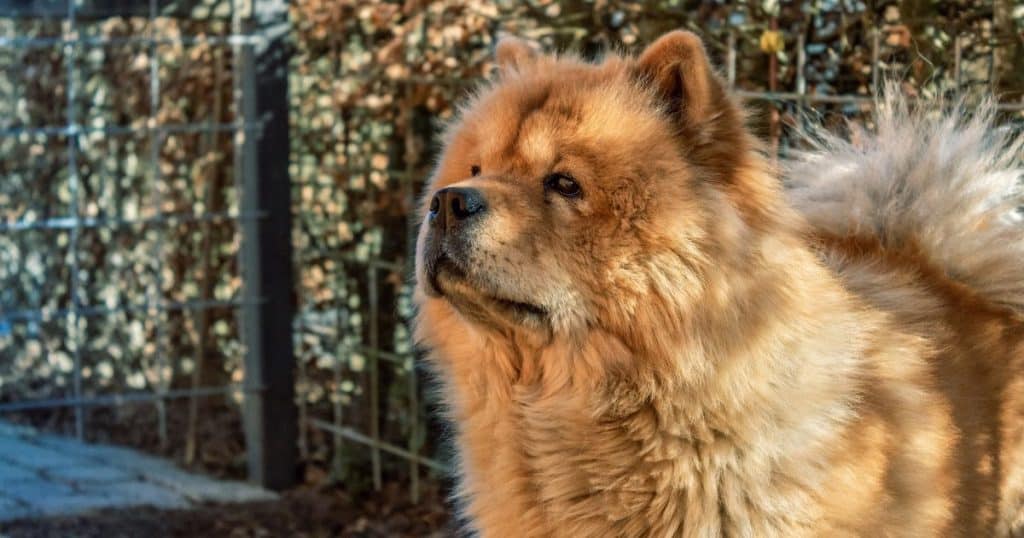What to Know
Chow Chows are a popular breed of dog that have unique physical characteristics and a distinct personality. One of the most important aspects of owning a Chow Chow is understanding how they grow and develop over time. This is where a Chow Chow growth chart comes in handy.
A Chow Chow growth chart can help owners track their dog’s progress and ensure they are growing at a healthy rate. These charts typically include information on the average size and weight of Chow Chows at different stages of development, as well as tips on how to properly care for and feed your dog to promote healthy growth.
While every dog is different and may not follow the growth chart exactly, having a general idea of what to expect can be helpful for both new and experienced Chow Chow owners. By using a growth chart and monitoring your dog’s progress, you can ensure they are on track for a healthy and happy life.
What is a Chow Chow Growth Chart?

A Chow Chow growth chart is a tool that helps Chow Chow owners to monitor their pet’s growth and development over time. It provides a visual representation of the expected growth pattern of a Chow Chow, allowing owners to track their dog’s progress and ensure that it is growing at a healthy rate.
Chow Chow growth charts typically include information such as the expected height and weight of a Chow Chow at various stages of its life, as well as the average growth rate for the breed. They may also include tips on how to ensure that a Chow Chow is getting the proper nutrition and exercise it needs to grow up healthy and strong.
Chow Chow growth charts can be particularly useful for new Chow Chow owners who are unsure of what to expect as their pet grows. By tracking their dog’s growth over time, owners can ensure that they are providing the best possible care for their pet and catch any potential health issues early on.
Why is a Chow Chow Growth Chart Important?

A Chow Chow growth chart is an essential tool for any new or experienced owner of this breed. It provides a visual representation of a Chow Chow’s growth and development, which can be useful in monitoring their health and determining if they are growing at a healthy rate.
By regularly tracking a Chow Chow’s weight and height, owners can ensure that their dog is not over or underweight, which can cause health problems. Additionally, a growth chart can help owners identify any potential health issues early on, such as bone or heart diseases, by noticing any unusual growth patterns.
It is important to keep in mind that growth charts are based on averages, so not all Chow Chows will follow the same growth pattern. However, having a growth chart as a reference can help owners determine if their dog is on track with the average growth rate for their breed.
Another benefit of using a Chow Chow growth chart is that it can help owners plan for their dog’s future needs. For example, if a Chow Chow is expected to grow to be a large dog, the owner may need to invest in a larger crate or bed to accommodate their size as they continue to grow.
How to Use a Chow Chow Growth Chart
Step 1: Understanding the Chart
To use a Chow Chow growth chart, it is important to first understand how it works. The chart typically includes the average weight and height of a Chow Chow at various ages, usually in weeks or months. It also includes a range of weights and heights that are considered normal for the breed.
Step 2: Recording Your Chow Chow’s Measurements
The next step is to record your Chow Chow’s measurements regularly. This includes weighing your dog and measuring their height at the shoulder. It is recommended to do this every week or month, depending on the age of your dog.
Step 3: Analyzing the Growth Chart Data
Once you have recorded your Chow Chow’s measurements, you can plot the data on the growth chart. This will allow you to see how your dog’s growth compares to the average growth of a Chow Chow. If your dog is falling outside of the normal range, it may be a sign of a health issue and you should consult with your veterinarian.
It is important to keep in mind that growth charts are just a guide and every dog is unique. Some Chow Chows may be smaller or larger than the average for their age and gender. Additionally, factors such as diet, exercise, and genetics can all play a role in a dog’s growth.
To get the most accurate picture of your Chow Chow’s growth, it is recommended to use a growth chart in combination with regular visits to the veterinarian. Your vet can assess your dog’s overall health and growth to ensure that they are on track to reach their full potential.
Factors That Affect Chow Chow Growth

Chow Chows are a beautiful and unique breed that can grow to be quite large. There are several factors that can affect their growth and development, including genetics, environment, and diet. Understanding these factors can help you ensure that your Chow Chow grows up healthy and happy.
Genetics
Genetics is one of the most important factors that affect the growth of a Chow Chow. The size of the dog’s bloodline is a part of genetics. Dogs with smaller parents tend to be smaller, while dogs with larger parents tend to be larger. It is important to consider the size of your puppy’s parents when looking at the Chow Chow growth chart.
Environment
The environment in which a Chow Chow grows up can also affect its growth. A lack of exercise and playtime can lead to stunted growth, while an active lifestyle can help a Chow Chow reach its full potential. It is important to provide your Chow Chow with plenty of opportunities for exercise and play, as well as a safe and comfortable living space.
Diet
Diet is another important factor that affects the growth of a Chow Chow. A balanced and nutritious diet is essential for healthy growth and development. It is important to feed your Chow Chow a diet that is appropriate for its age and size, and to provide it with plenty of fresh water.
Overfeeding can lead to obesity, which can cause health problems and stunted growth. It is important to monitor your Chow Chow’s food intake and to provide it with appropriate portion sizes. Consult with a veterinarian to determine the best diet for your Chow Chow.
Common Concerns About Chow Chow Growth
Overweight Chow Chows
Chow Chows are prone to obesity due to their low metabolism and love for food. Obesity can lead to various health problems like joint pain, heart disease, and diabetes. To prevent obesity, owners should regulate their Chow Chow’s diet and provide them with regular exercise. A healthy diet for a Chow Chow should consist of high-quality protein, healthy fats, and complex carbohydrates. Owners should also avoid giving their Chow Chows table scraps and human food, which can lead to weight gain.
Owners should monitor their Chow Chows’ weight regularly and consult with a veterinarian if they notice any sudden weight gain. If a Chow Chow is already overweight, owners should work with their veterinarian to develop a weight loss plan that includes a healthy diet and regular exercise.
Underweight Chow Chows
Underweight Chow Chows can be a cause for concern as it can indicate underlying health problems. Owners should consult with a veterinarian if they notice their Chow Chow is underweight or not gaining weight at a healthy rate. Underweight Chow Chows may require additional feedings or a change in diet to help them gain weight.
Owners should also ensure that their Chow Chows are not experiencing any dental problems that may be preventing them from eating. Chow Chows may also be picky eaters, which can lead to weight loss. Owners can try different types of food and feeding methods to encourage their Chow Chows to eat.
Slow-Growing Chow Chows
Chow Chows have a slow growth rate compared to other breeds, and their growth rate can vary depending on genetics and environmental factors. Owners should not be concerned if their Chow Chow is not growing as fast as other breeds. However, if a Chow Chow is not growing at all or is experiencing stunted growth, owners should consult with a veterinarian to rule out any underlying health problems.
Owners can also ensure that their Chow Chows are receiving a healthy diet with all the necessary nutrients for growth. Providing regular exercise and a stress-free environment can also help promote healthy growth in Chow Chows.
Before You Go
Chow Chows are a unique breed of dog that require careful monitoring of their growth and development. From birth to adulthood, owners should keep track of their Chow Chow’s weight and size to ensure they are healthy and happy.
According to various sources, Chow Chows typically require 12 to 18 months to finish growing. During this time, they will experience significant weight gain and size increases. At six months old, most Chow Chows will weigh between 30 and 45 pounds. By adulthood, male Chow Chows can weigh up to 70 pounds, while females can weigh up to 55 pounds.
It is important to note that all puppies will grow at their own unique rate, and genetics also play a significant role in their growth. While the weight and size charts provided by various sources can be helpful, they should not be used as the sole indicator of a Chow Chow’s health and development.
Owners should also pay attention to their Chow Chow’s diet, exercise routine, and overall health. Regular visits to the veterinarian can help ensure any potential health issues are caught early on, and proper nutrition and exercise can help promote healthy growth and development.
In conclusion, monitoring a Chow Chow’s growth and development is crucial for their overall health and well-being. By following the weight and size charts provided by various sources, along with proper nutrition and exercise, owners can help their Chow Chow grow into a happy and healthy adult dog.
Related Articles:




Leave a Reply
You must be logged in to post a comment.